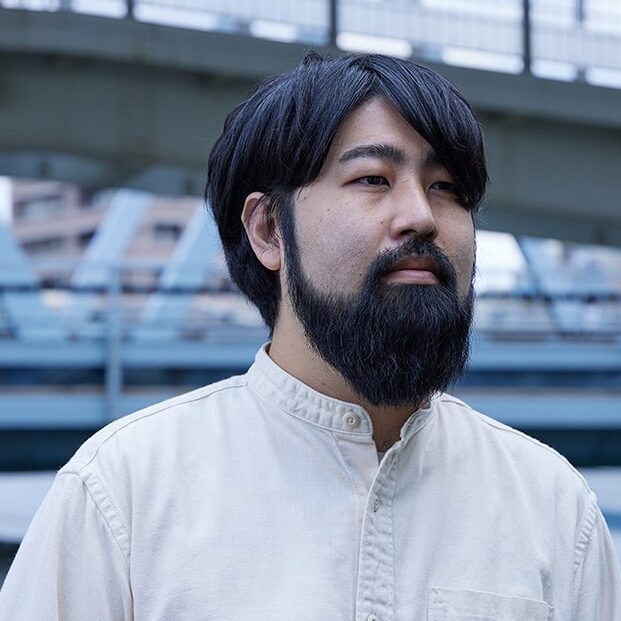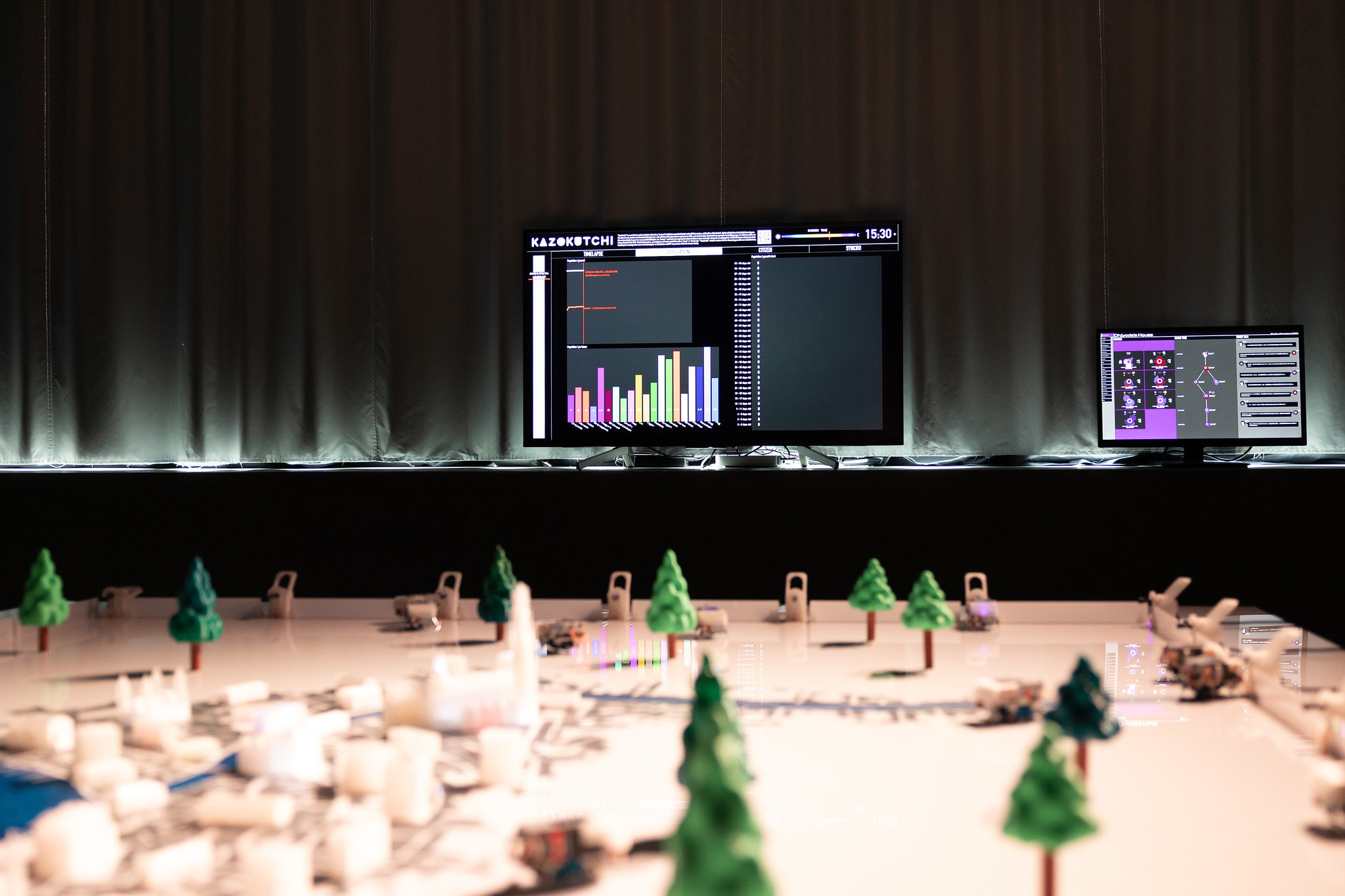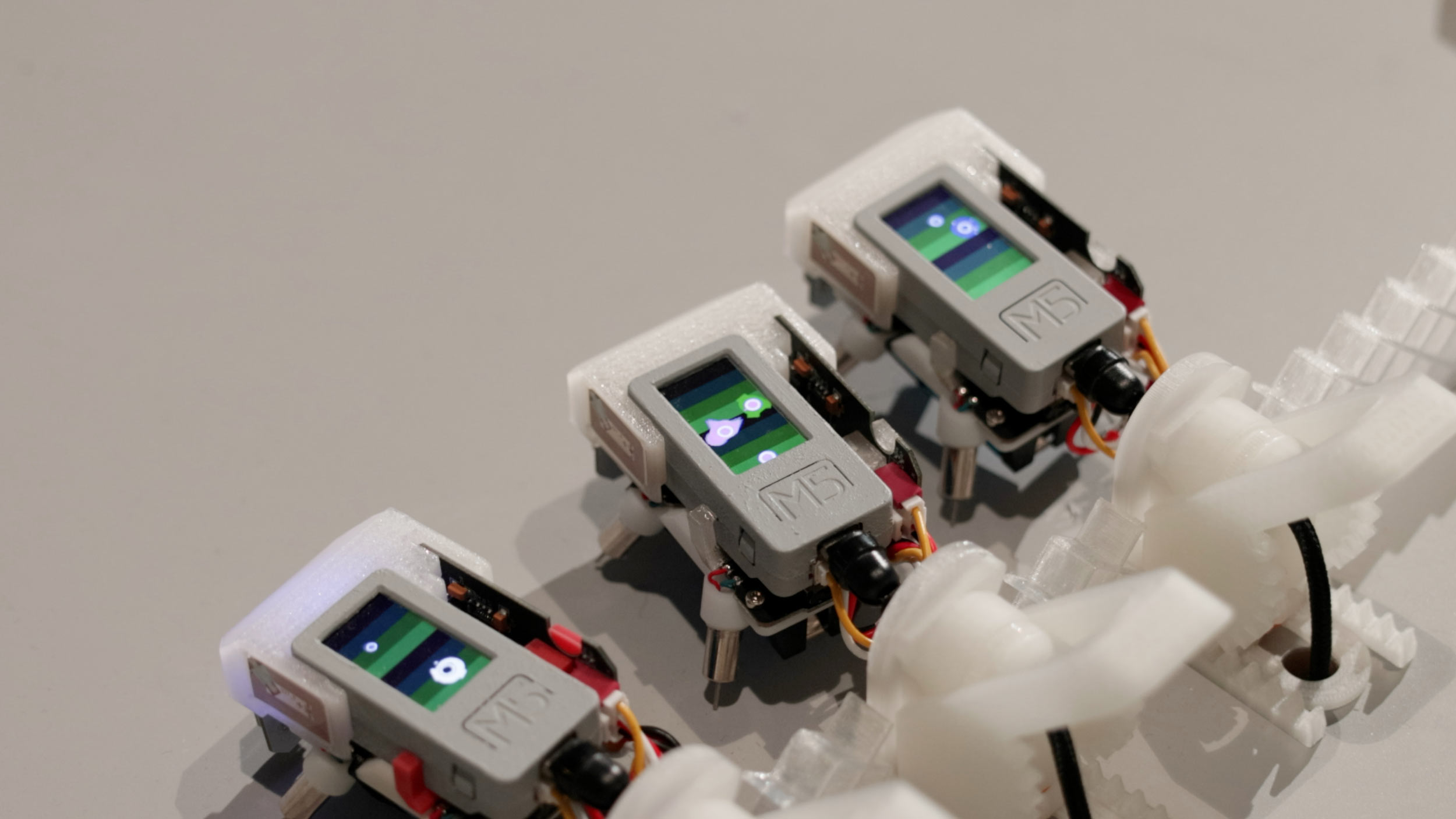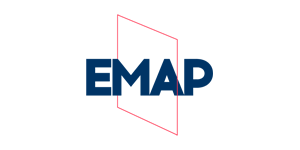Kazokutchi is a project of reproductive digital artificial life that uses a swarm of physical robots as its host. It consists of a family of “Kazokutchi,” digital artificial lives that inhabit each movable robot house. Each Kazokutchi is linked to an NFT with its own name, date of birth, family name and gene. The cycle of life includes reproduction, birth, growth and end of life. By inscribing this information into the blockchain, we aim to depict a digital life that cannot be reset.
By overlaying a diorama of an actual city with an ecosystem of digital artificial life, the Kazokutchi installation interweaves the viewer’s imagination with local knowledge and memories. The conversations and discussions that take place in front of the installation are intended to provide diverse perspectives and insights.
Bios
-
 Photo: Ioto Yamaguchi
Photo: Ioto YamaguchiAkihiro Kato
JP
Akihiro Kato specializes in web engineering and produces a wide range of installation works, including blockchain/NFT-based works, board games, sculptures, and video works. Akihiro Kato creates works that depict the relationship between technology and society through a combination of digital/physical media.
-
 Photo: Martina Kohnova
Photo: Martina KohnovaSo Kanno
JP
So Kanno’s works are mainly based on robotics, such as “Lasermice,” a swarming robot that imitates the swarming behavior of small animals, and “Kazokutchi”, a robot that host a digital artificial life NFT. So Kanno’s interest lies less in perfect control of industrial products, more in their unpredictability, emergence, and errors. To this end, he develops systems that utilize and induce these elements. So Kanno develops a wide range of works, such as installations, performances, and workshops using his own robots.
-
 Photo: Takemi Watanuki
Photo: Takemi WatanukiTakemi Watanuki
JP
Born in Japan 1993, Takemi Watanuki is a visual artist based in Tokyo. Takemi Watanuki graduated from the Institute of Advanced Media Arts and Sciences. Takemi Watanuki specializes in graphics and video, and also works as a VJ. He has created complex simulations, including of artificial life cycles, mainly using programs to achieve this. He is also interested in the interaction between machines and people, and has created an ironic work called “node hands” that expresses the emptiness of communication in the modern age through smartphones.
Credits
Logo design by Chihiro Oyama
Diorama production by Yuji Onoda
This work was realized in part within the framework of the European Media Art Platform residency program at KONTEJNER | bureau of contemporary art praxis, with the support of the Creative Europe Culture Programme of the European Union. Co-developed by NTT InterCommunication Center [ICC]




